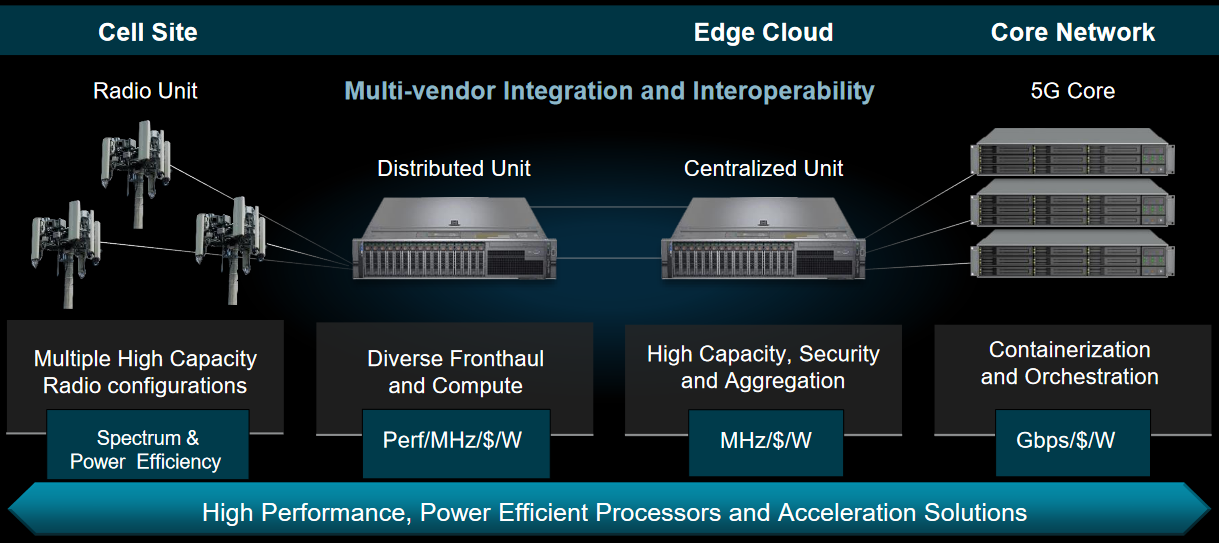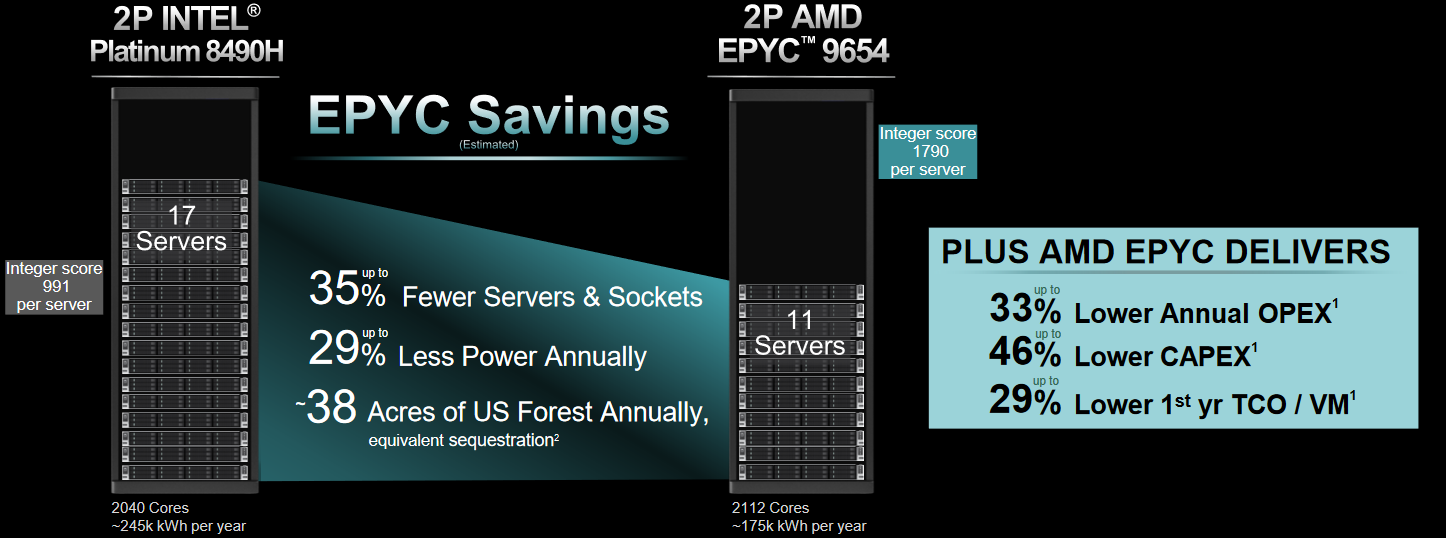I’m sure that the folks at AMD and Intel don’t like to be compared to each other, but it’s a bit difficult to avoid doing so from the position of an outside observer. I’m by no means an expert here, but let’s start with my 30,000-foot view of the world. If nothing else, it will give everyone something to moan and groan about.
A portmanteau word is created when two other words or names are smooshed together. For example, the Intel moniker is a portmanteau of “integrated” and “electronics.” Founded in 1968, Intel was an early developer of SRAM and DRAM memory chips. In fact, even though Intel fielded the world’s first commercial microprocessor in the form of the 4-bit 4004 in 1971 (the 4004 was followed by the 8008, the 4040, the 8080, the 8086, and the 8088), memory chips represented most of its business until IBM’s 8088-based personal computer (PC) took the world by storm in 1981.
Similarly, when it was founded in 1969, AMD (Advanced Micro Devices) primarily produced memory chips and other components for computers. In the early days, the folks at AMD did good business second sourcing (making copies of) other companies’ devices, while occasionally developing something of their own. AMD later expanded into the microprocessor market. They commenced by creating clones of Intel’s processors and eventually began to develop their own unique architectural implementations that continued to execute Intel’s X86 instruction set (Intel and AMD have a cross licensing agreement in place, thereby ensuring that the latest and greatest incarnations of the X86 instruction set remain compatible between their products).
Things started to go a bit pear-shaped for AMD circa the early 2010s, with Intel taking a strong lead in processor innovations, then AMD bounced back circa the mid-to-late-2010s with cunning new processor microarchitectures.
There was also a period between 2010 and 2020 (give-or-take) when AMD seemed to be focusing its processor attentions on embedded computing space (where no one can hear you scream) while Intel was more interested in developing processors targeted at PCs, workstations, and the high-end servers used in data centers and high-performance computing (HPC) applications. Having said this, it now appears that both companies are determined to span all these markets.
As an aside, my friend Steve Leibson has published a bunch of very interesting multi-part histories here on EE Journal as follows:
- Which Was the First Microprocessor?
- Ray Holt and the CADC – The World’s First Military Digital Flight Computer
- A Brief History of the Single-Chip DSP
- A History of Early Microcontrollers
- How the FPGA Came to Be
- The Transistor at 75: The First Makers
- A Brief History of the MOS Transistor
I think it would be awesome if Steve decided to write similar histories of companies like Intel and AMD, also Fairchild and Texas Instruments and… well, all the “greats,” really. It would be especially interesting to know how they all related to each other and “cross-pollinated” each other, but I guess we’ll just have to keep our fingers crossed on this.
I’m a simple man (I don’t like to boast, but most people have no idea just how simple I am) and I don’t enjoy change. I was happy to have Intel and AMD competing against each other to provide ever-more-powerful processors. Similarly, I was happy when FPGA rivals Altera and Xilinx were standalone entities challenging each other to create higher-capacity and higher-performance programmable logic devices.
I must admit to being somewhat disgruntled when Intel acquired Altera in 2015 (the Altera portion of this partnership is now known as the Programmable Solutions Group, or PSG for short). I fear that on that occasion I failed to see the wood for the trees. Over the years, however, I’ve come to appreciate how the combination of Intel’s processors and Altera’s FPGAs provide the end-to-end silicon solutions that are demanded by today’s most sophisticated applications, including artificial intelligence (AI) and machine learning (ML), high-performance computing (HPC), data centers, networking infrastructures, and 5G/6G telecommunications, to name but a few.
As another aside, have you ever wondered where the expression “can’t see the wood for the trees” (substitute “forest” for “wood” in America) came from? In fact, it originated in England. There’s a beautiful city called Bath in the county of Somerset. In the heart of this city is a concourse of houses dating from the 1740s that were designed by the English architect John Wood the Elder. Over time, a tree planted directly in front of these houses grew so large that people began to say, “You can’t see the Wood for the tree!” (You’re welcome.)
Thus it was, when AMD acquired Xilinx in February 2022, which is only a little over a year ago at the time of this writing, as opposed to exclaiming “Arrggghhh,” I was instead moved to mutter, “Why did it take you so long?”
All of the above is a long-winded way to introduce the fact that I was just chatting with Gilles Garcia, who is the Senior Director of the Communications Group at AMD. Coming from the Xilinx side of things, Gilles’s focus is on wired and wireless communications. Having said this, Gilles started by reminding me that the AMD + Xilinx combo is able to cover everything from the cloud, network, hyperscale and supercomputing, all the way to smart client devices and edge computing, while also addressing AI analytics, adaptable intelligent systems, gaming, simulation, and visualization, and—of course—5G and communications infrastructure, where the latter was to be the focus of our discussion.

AMD’s high-performance and adaptive computing solutions (Source: AMD)
As I’ve noted in previous columns, Barcelona, Spain is home to the Mobile World Congress, an annual trade show that’s billed as being the largest and most influential connectivity event in the world. The most recent MWC, which was held from February 27 to March 2, 2023, attracted 2,400+ exhibitors and 88,500+ attendees from 202 countries and territories. Gilles told me that, at MCW this year, AMD awed the assembled throng with its end-to-end 5G telco solutions, ranging from radio access networks (RANs) to the 5G core.

Addressing challenges from the radio unit (RU, distributed unit (DU), and centralized unit (CU) to the 5G core (Source: AMD)
All of this is, of course, made possible using the combination of AMD’s homegrown CPUs and the FPGAs it acquired from Xilinx. Two FPGA devices of particular interest are the ZU63DR and the ZU64DR, which were new at MCW 2023.
![]()
5G AMD silicon roadmap for RUs and O-RUs (Source: AMD)
With 4T4R capability (used for base stations with four transmit and four receive antennas) and a full digital front end (DFE) implemented as hard IP, the ZU63DR is targeted at small cells using a 3GPP Split 7.2 model. By comparison, with its 8T8R capability and DFE, the ZU64DR is targeted at 3GPP Split 8 applications. Both devices offer power-efficient and cost-efficient technology targeted at large volume deployments.
Also of interest to me is the next-generation Versal AI RF device (shown in the lower right-hand side of the above image), which will combine and extend the capabilities of existing AI and RF SoC FPGAs. These devices will provide the “smarts” needed to drive advanced 5G use cases and prepare the way for future 6G deployments.
Next, Gilles gave me a brief overview of the latest and greatest fourth generation of EPYC processors, which boast from 8 to 96 cores per socket. These bodacious beauties also flaunt 128 PCIe Gen 5 lanes, 12 memory channels, and support for 6 terabytes of RAM per socket. O-M-G, is all I can say. As an illustration of the EPYC’s epic potential, Gilles shared the following slide.

Fewer servers and less power lead to lower emissions (Source: AMD)
Of course, Gilles used this slide to drive home his telco positioning points regarding efficiency from the RAN to the 5G core, but the same is true of any data center and HPC facility. The bottom line is 35% fewer servers and sockets and 29% less power. In the case of this one specific example, transitioning from 17 servers to 11 servers results in CO2 sequestration equivalent to 38 acres of forest per year. Once again, O-M-G!
Last, but certainly not least, Gilles told me about a very interesting announcement they made at MWC 2023, which was that—in collaboration with VIAVI Solutions—AMD is opening a telco solution lab in its Santa Clara office. This lab will allow AMD and its ecosystem partners to perform integration testing and benchmarking, software optimization, and workload optimization (I hear they are hiring if you happen to be interested).
I think the acquisition of Xilinx was one of the best moves AMD could make. This opens the door to their having the ability to provide end-to-end silicon and software solutions, not only for telco applications, but for any form of high-performance computing that demands vast compute resources coupled with humongous amounts of data and eyewatering communication bandwidths. This is certainly something that resonates with their customers. In the year since the Xilinx acquisition, AMD has more than doubled its number of ecosystem partners and customers in the wired and wireless communications arenas alone.
But enough about me, let’s talk about you (what do you think about me?). Sorry, I couldn’t help myself. What I meant to ask was, what do you think about all of this?






One thought on “AMD Awes with End-to-End 5G Telco Solutions”